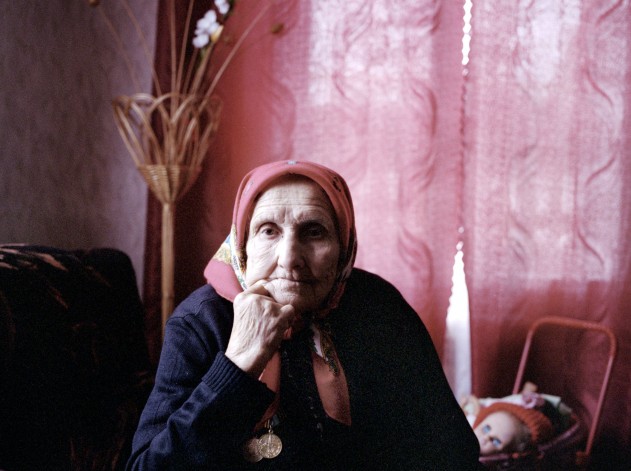Collectives and collaboration are the future of photography
- Text by Alex King
- Photography by Justin Sainsbury

If you thought photography was an individual pursuit, think again. Photography collectives, from Magnum to VII to The Deadbeat Club, have always played an important role in pushing the medium forward. The internet, a bleak economic outlook and the transition to digital have all fired a huge resurgence of the collective over the last decade as photographers adapt to the new rules of the game.
Inspired by the shift towards greater cooperation, curators of the Brighton Photo Biennial have themed this year’s event around communities, collectives and collaboration. The sixth edition of the UK’s largest photography festival shines a light on collectives old and new, alongside commissions involving multiple partners working together to take projects in unexpected directions.
Before the Biennial kicks off on Saturday, October 4, Huck headed down to the South Coast for a sneak peak.
A Return To Elsewhere
One of the festival’s flagship commissions joined up two photographers who had never met or worked together before: South African Thabiso Sekgala and Kalpesh Lathigra from the UK. The pair traded places to explore Indian communities in Marabastad and Laudium, South Africa and Brighton, UK. Sekgala and Lathigra’s joint project looks at the legacy of British colonialism, which left deep scars in many places it touched, but at the same time connected people across the globe and helped give birth to today’s vibrant multicultural society.
Sputnik Photos
The amazing Circus Street space, a crumbling former fruit and vegetable market, is home to a showcase of five contemporary photo collectives, including Sputnik Photos from Central and Eastern Europe. Sputnik look at identity and experience in post-Soviet Europe, with Adam Panczuk’s I_am_in_vogue that explores fashion among young Belorussians and Agnieszka Rayss’ I Reminisce and Cry for Life that profiles women who served as nurses in WWII.
Photocopy Club
Huck favourites Photocopy Club bring their trademark black and white Xeroxed vibe to Brighton, but this time with a twist: photographers must form collectives of 3-10 people and submit work together on the theme of community. Catch Matt Martin’s zine making workshop at BPB before he takes the show to South Africa and holds a zine swap in Johannesburg.
Ruido
Barcelona-based Ruido bring a strong social conscience to focus on the Hispanic world. Pau Coll and Edu Ponce’s La Sala Negra takes a new perspective on Central America’s epidemic of gang violence and Toni Arnau’s Paraná project looks at the people in three countries who eek out an existence beside Latin America’s second largest river.
Burn My Eye
Burn My Eye is an international street photography collective and their work is presented alongside Ruido and Sputnik at Circus Street.
Co-Optic
Co-Optic is one of the historical collectives whose legacy is celebrated in this year’s biennial. Martin Parr, Fay Godwin and Gerry Badger all cut their teeth at Co-Optic, where they learned from pioneers in the US and Europe to help them revitalise documentary photography in the UK through the 1970s.
Amore e Piombo

Demonstration against the Historic Compromise, alliance of the Christian Democracy (DC) and the Italian Communist Party (PCI), Rome, 1970s © Team Editorial Services/Alinari
Rome’s Team Editorial Services agency were instrumental in the development of paparazzi style celebrity photography, while simultaneously documenting Italy’s descent into near-civil war during the 1970s. The agency’s photographers could be shooting celebrities on the Via Veneto one minute, then covering bombings, political assassinations and demonstrations the next. In presenting the photos of celebrity and carnage together – as they were shot – Amore e Piombo (love and lead) reveals the conflicts and contradictions of Italy’s most turbulent decade.
Brighton Photo Biennial 2014 runs October 5 to November 2 at venues around the city.
Latest on Huck

In the ’60s and ’70s, Greenwich Village was the musical heart of New York
Talkin’ Greenwich Village — Author David Browne’s new book takes readers into the neighbourhood’s creative heyday, where a generation of artists and poets including Bob Dylan, Billie Holliday and Dave Van Ronk cut their teeth.
Written by: Cyna Mirzai

How Labour Activism changed the landscape of post-war USA
American Job — A new exhibition revisits over 70 years of working class solidarity and struggle, its radical legacy, and the central role of photography throughout.
Written by: Miss Rosen

Analogue Appreciation: Emma-Jean Thackray
Weirdo — In an ever more digital, online world, we ask our favourite artists about their most cherished pieces of physical culture. Today, multi-instrumentalist and Brownswood affiliate Emma-Jean Thackray.
Written by: Emma-Jean Thackray

Meet the shop cats of Hong Kong’s Sheung Wan district
Feline good — Traditionally adopted to keep away rats from expensive produce, the feline guardians have become part of the central neighbourhood’s fabric. Erica’s online series captures the local celebrities.
Written by: Isaac Muk

How trans rights activism and sex workers’ solidarity emerged in the ’70s and ’80s
Shoulder to Shoulder — In this extract from writer Jake Hall’s new book, which deep dives into the history of queer activism and coalition, they explore how anti-TERF and anti-SWERF campaigning developed from the same cloth.
Written by: Jake Hall

A behind the scenes look at the atomic wedgie community
Stretched out — Benjamin Fredrickson’s new project and photobook ‘Wedgies’ queers a time-old bullying act by exploring its erotic, extreme potential.
Written by: Isaac Muk





